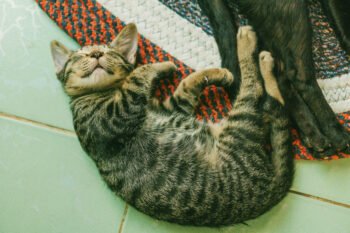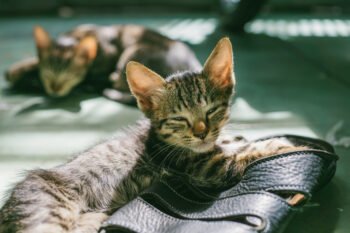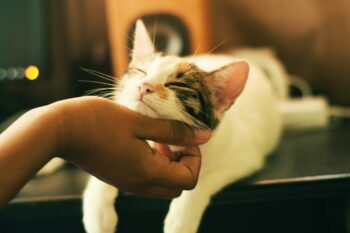Exercise is necessary for physical health and emotional well-being of all species. In the case of cats, the amount of exercise needed
depends upon the individual, and is influenced by factors such as age, breed, sex and neuter status. We all know cats who spend 98 percent of their days and nights napping, yet enjoy perfect physical health (probably not true of any humans!). Since it is tricky to take a pet cat jogging, how concerned should we be about exercise — or a lack of it — for our feline companions?
Cats are very good at self-regulating their exercise needs. If offered an opportunity to walk or run for extended periods, they would probably decline the offer (unless, of course, there was a delectable reward at the other end). Instead, indoor cats obtain exercise from day-to-day routines such as walking from the food bowl to the litter box and back to their napping perch.
In some cases, a combination of genetics, diet and a lack of activity lead to obesity, a health risk for any animal but particularly for cats (overweight cats who lose weight suddenly are vulnerable to hepatic lipidosis, a life-threatening condition). Because an increasing number of pet cats live exclusively indoors, perhaps we should try harder to influence physical activity and good nutrition, thus lessening the risks of obesity.
How can we get our indoor cats moving? The following suggestions may be helpful:
he has to walk at least a short distance to get from one place to the other (litter boxes should not be inaccessible, however, or your cat may be forced to create his own — on your living room floor). Provide at least one enticing cat station — such as a comfortable perch from which to watch a bird feeder — on a different floor of your home.
delicious treats inside a toy, which she will try to empty by batting and chewing. Such
tasks are quickly learned if cats receive rewards (that is, bits of food) for their efforts.







